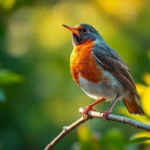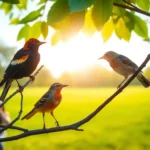The Ibong Adarna stands as one of the Philippines’ most enchanting mythical creatures and represents a cornerstone of Filipino literary heritage. This magical bird captivates audiences with its extraordinary abilities to heal through song and transform those who hear its melody into stone. We’ve witnessed countless generations pass down this legendary tale that continues to spark imagination across the archipelago.
What makes the Ibong Adarna particularly fascinating isn’t just its supernatural powers but its deep cultural significance in Filipino storytelling. The bird’s seven vibrant songs possess the power to cure any illness while its droppings can turn unsuspecting listeners into lifeless statues. We see this creature as more than folklore – it’s a symbol of hope and transformation that reflects the Filipino spirit.
Today we’ll explore the rich mythology surrounding this legendary bird and discover why the Ibong Adarna remains one of the most beloved figures in Philippine literature. From its origins to its lasting impact on modern culture we’re diving deep into this magical industry.
The Legend of Ibong Adarna Bird
The Ibong Adarna legend centers around three princes from the Kingdom of Berbanya who embark on a perilous search to capture the magical bird. King Fernando falls gravely ill with a mysterious ailment that only the Adarna’s healing song can cure. Prince Pedro and Prince Diego, the two eldest sons, attempt the journey first but fail when they succumb to the bird’s enchanting melodies and turn to stone.
Prince Juan, the youngest and most humble of the brothers, successfully completes the search through his pure heart and determination. We see Juan climb the mystical Piedras Platas tree where the Adarna perches each night to sing its seven magical songs. Armed with a knife to keep himself awake and lime juice to stay alert, Juan captures the bird after it falls asleep following its seventh song.
The Adarna bird’s songs possess incredible power that extends beyond mere healing. Each of the seven melodies serves a different purpose: the first six songs can heal any illness or wound, while the seventh song causes listeners to fall into eternal slumber unless they resist its spell. Those who hear the songs with impure intentions or evil hearts transform into stone statues, scattered around the base of the Piedras Platas tree.
Betrayal marks the return journey when Pedro and Diego awaken from their stone curse and plot against their younger brother. We witness the brothers’ jealousy lead them to push Juan into a deep well and claim credit for capturing the Adarna. But, Juan survives with the help of a hermit and eventually returns to expose his brothers’ deception.
The legend emphasizes themes of virtue, perseverance, and the triumph of good over evil through Juan’s character. Filipino storytellers have passed down this tale for generations, using it to teach moral lessons about humility, courage, and the consequences of greed. The story’s enduring appeal lies in its combination of magical elements with relatable human emotions and conflicts that resonate across cultures and time periods.
Physical Description and Magical Properties
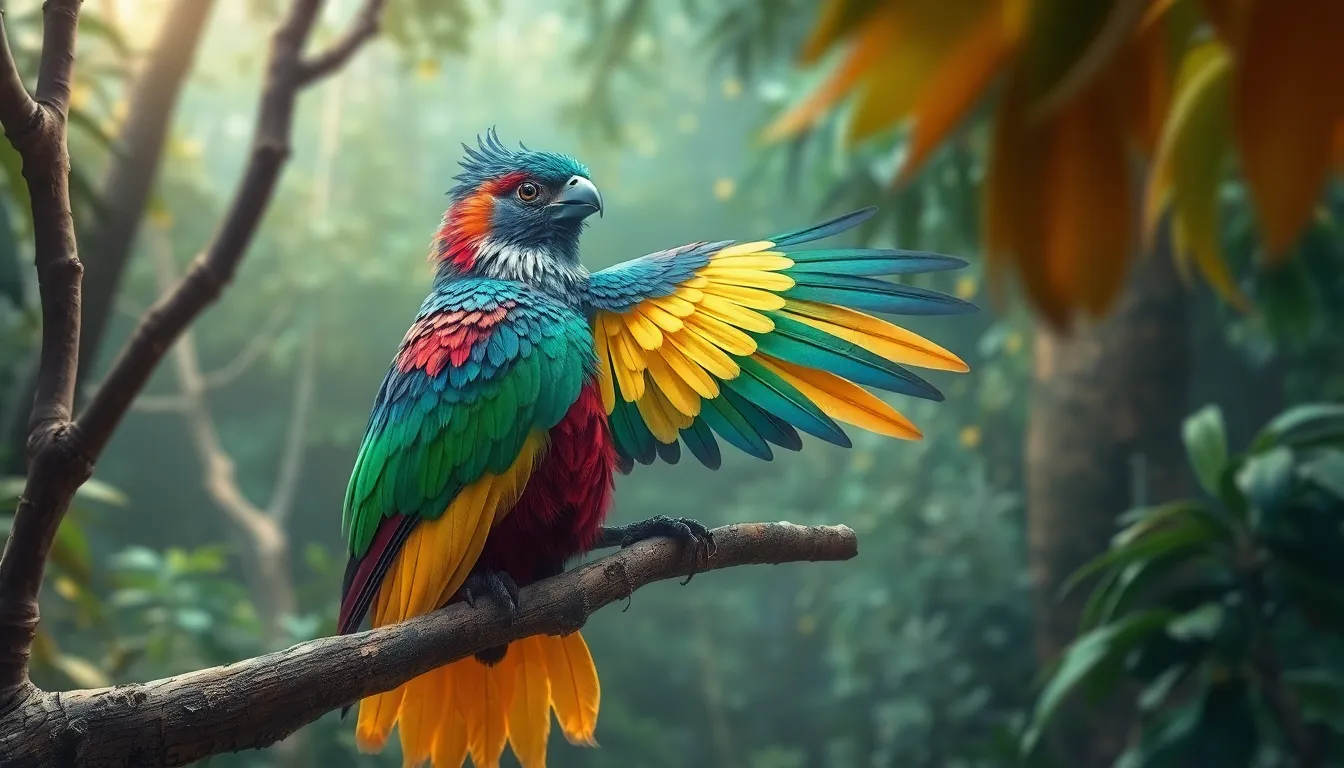
The Ibong Adarna stands as one of Philippine literature’s most visually stunning and magically powerful creatures. We explore the bird’s extraordinary physical characteristics and supernatural abilities that make it both beautiful and formidable.
Colorful Plumage and Transformation
The Ibong Adarna displays magnificent plumage that shifts through seven distinct colors as it sings its magical songs. Each transformation reveals brilliant hues ranging from gold and silver to deep crimson and emerald green. The bird’s feathers shimmer with an otherworldly luminescence that captivates all who witness its presence.
During each song cycle, the Adarna’s appearance changes dramatically. Golden feathers emerge first, followed by silver plumes that reflect moonlight. Red and blue variations create striking contrasts while purple and green transformations complete the spectacle. The final seventh song reveals the bird’s most radiant form with multicolored feathers that seem to contain starlight itself.
The creature’s size matches that of a large eagle with graceful wings spanning several feet. Its eyes glow with supernatural intelligence and its beak gleams like polished silver. The transformation process occurs seamlessly as each song begins, making the Adarna a living kaleidoscope of color and light.
Healing Powers and Enchanted Song
The Ibong Adarna possesses seven distinct magical songs, each carrying unique supernatural properties. Six of these melodies contain powerful healing abilities that can cure any illness or injury when heard by pure hearted individuals. The bird’s voice resonates with celestial harmony that penetrates deep into the listener’s soul.
Medical ailments vanish completely when exposed to the Adarna’s therapeutic songs. Wounds heal instantly and diseases disappear without trace. King Fernando’s mysterious illness responds only to these magical melodies, demonstrating the bird’s unparalleled healing capabilities.
The seventh and most dangerous song induces eternal slumber in those with impure hearts or evil intentions. This protective mechanism turns corrupt listeners into stone statues, serving as both punishment and warning. Pure souls like Prince Juan remain unaffected by this petrifying power, allowing them to capture the bird safely.
| Song Number | Color Transformation | Magical Effect |
|---|---|---|
| 1-6 | Gold, Silver, Red, Blue, Purple, Green | Healing properties |
| 7 | Multicolored | Eternal sleep/petrification |
The bird’s enchanted melodies carry across vast distances, drawing seekers from far lands. Each note contains concentrated magic that affects both physical and spiritual realms, making the Ibong Adarna one of mythology’s most potent healing entities.
The Story of the Three Princes
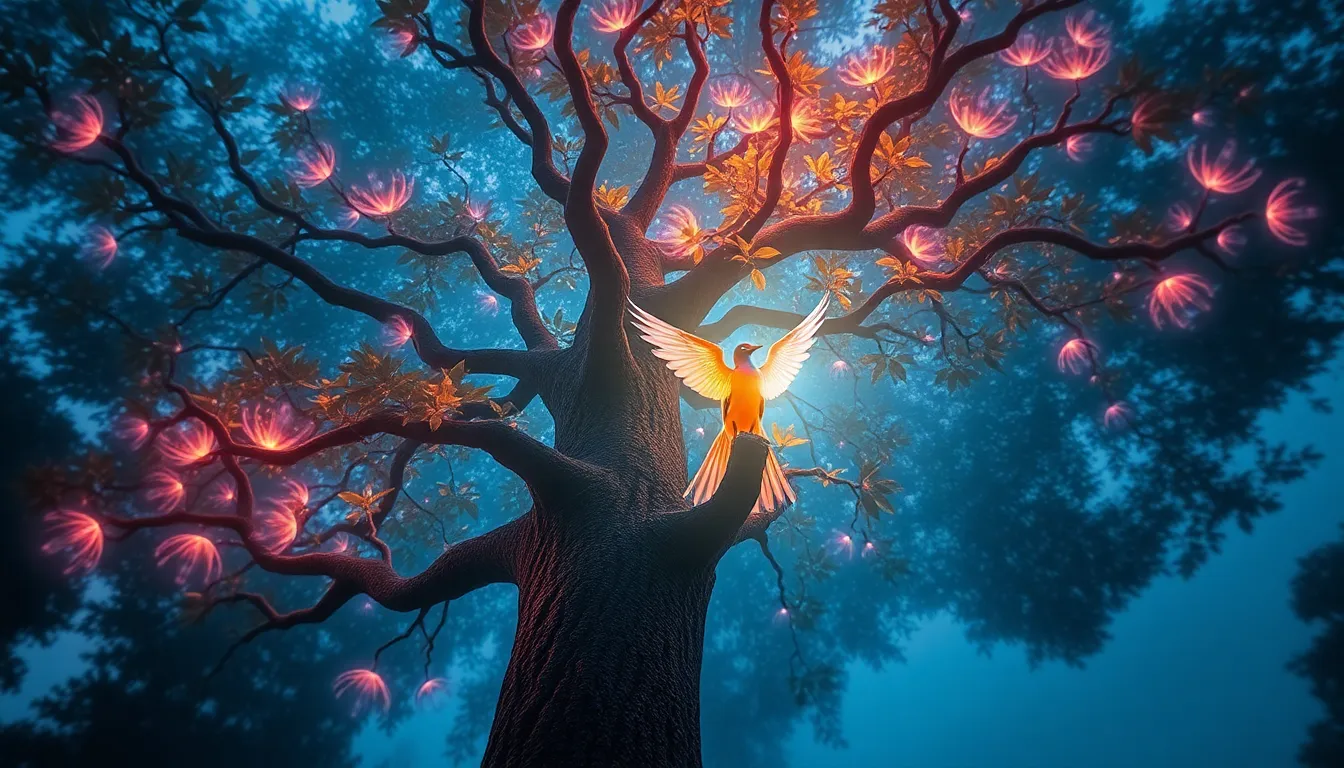
The three princes of Berbanya each embarked on separate journeys to capture the mystical Ibong Adarna and save their dying father. Their individual quests reveal contrasting approaches to adversity and the consequences of character flaws versus virtues.
Prince Pedro’s Failed Search
Prince Pedro, the eldest son, began his mission with confidence and determination but lacked the spiritual purity required to resist the Adarna’s power. His journey led him to the base of the Piedras Platas tree where the magical bird perched among the highest branches. The prince waited patiently for the creature to begin its enchanting performance.
When the Ibong Adarna started singing its seven magical melodies, Pedro fell victim to the bird’s supernatural influence. The first six healing songs mesmerized him completely, and by the seventh song, his impure heart couldn’t withstand the mystical force. Pedro transformed into solid stone, becoming a permanent fixture at the tree’s base. His failure demonstrated that royal blood alone doesn’t guarantee success in spiritual trials.
Prince Diego’s Unfortunate Fate
Prince Diego, the middle son, discovered his brother’s petrified form but didn’t learn from Pedro’s mistakes. Convinced of his own superiority, Diego positioned himself strategically near the magical tree and prepared for his encounter with the legendary bird. His arrogance blinded him to the spiritual preparation necessary for such a search.
The Ibong Adarna’s seven songs affected Diego identically to his older brother. Each melody drew him deeper under the bird’s spell, and his heart proved equally impure when tested by the creature’s magic. Diego joined Pedro as a stone statue, creating a grim warning for anyone who dared approach the mystical tree. Their combined failure emphasized that strength and noble birth mean nothing without moral virtue.
Prince Juan’s Successful Mission
Prince Juan, the youngest prince, approached his search with humility and genuine compassion for his father’s suffering. Unlike his brothers, Juan prepared spiritually for the encounter and maintained pure intentions throughout his journey. He climbed the Piedras Platas tree methodically, positioning himself within reach of the magnificent bird.
The prince listened to all seven magical songs while remaining conscious through sheer determination and spiritual purity. Juan captured the Ibong Adarna after its performance concluded, successfully completing the mission that had claimed his brothers. His pure heart protected him from the stone transformation that befell Pedro and Diego. The youngest prince’s success proved that virtue triumphs over pride and that genuine love motivates the greatest achievements.
Cultural Significance in Filipino Literature
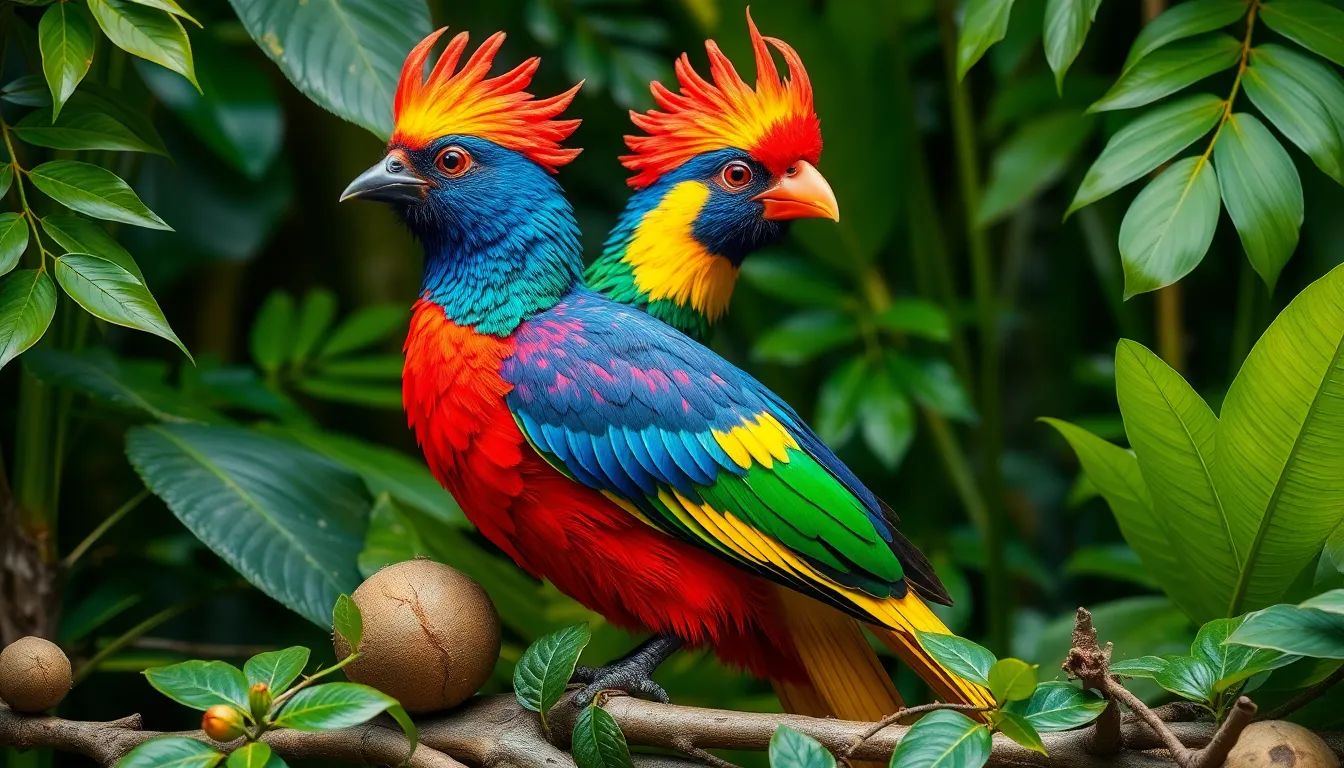
The Ibong Adarna stands as a cornerstone of Filipino literary tradition, representing the rich storytelling heritage that has shaped our national identity for centuries. This epic narrative continues to influence contemporary literature and arts throughout the Philippines.
Educational Value and Moral Lessons
Filipino educators have long recognized the Ibong Adarna’s power as a teaching tool that imparts essential values to generations of students. The epic’s central themes emphasize virtue over privilege, demonstrating how Prince Juan’s humility and compassion triumph where his brothers’ pride and arrogance fail. Our educational system integrates this narrative to teach children about perseverance, honesty, and the importance of maintaining pure intentions even when facing seemingly impossible challenges.
The story’s moral framework presents clear consequences for both virtuous and corrupt behavior. Pedro and Diego’s betrayal of their brother results in their eventual exposure and disgrace, while Juan’s steadfast character leads to his ultimate vindication. These lessons resonate particularly strongly in Filipino culture, where family loyalty and personal integrity remain paramount values.
Teachers across the archipelago use the Adarna’s seven songs as metaphors for life’s different stages and challenges. Each song represents a unique test of character, with the sixth song offering redemption and healing to those who approach it with genuine purpose. The seventh song’s power to induce eternal slumber serves as a powerful reminder that some paths in life require complete spiritual preparation.
Influence on Modern Filipino Arts
Contemporary Filipino artists continue to draw inspiration from the Ibong Adarna’s rich imagery and symbolism across multiple creative disciplines. Visual artists have reimagined the bird’s seven color transformations in paintings, sculptures, and digital art installations throughout major galleries in Manila, Cebu, and Davao. These modern interpretations often incorporate traditional Filipino artistic elements such as indigenous patterns and native materials.
Theater companies have produced many adaptations of the Adarna legend, with the Cultural Center of the Philippines staging acclaimed versions that blend traditional Filipino performance styles with contemporary staging techniques. Dance troupes have choreographed elaborate interpretations of the princes’ journeys, using movement to represent the bird’s magical songs and the transformation from stone back to human form.
Filipino literature continues to reference the Adarna in contemporary novels, poetry, and short story collections. Modern authors like F. Sionil José and Nick Joaquin have incorporated Adarna symbolism into their works, using the bird as a metaphor for the elusive nature of truth and redemption in Philippine society. The epic’s themes of colonial struggle and indigenous wisdom appear frequently in postcolonial Filipino writing.
Music composers have created symphonic works based on the seven songs of the Adarna, with the Philippine Philharmonic Orchestra performing compositions that attempt to capture each song’s unique healing properties through orchestral arrangements. These musical interpretations often feature traditional Filipino instruments such as the kulintang and bandurria alongside Western orchestral elements.
Symbolism and Themes

The ibong adarna bird serves as a powerful symbol that embodies universal human struggles and moral principles within Filipino literature. These symbolic elements transform the epic into a timeless allegory that resonates across cultures and generations.
Good Versus Evil
Good versus evil manifests most clearly through the contrasting actions of Prince Juan against his elder brothers Pedro and Diego. Prince Juan represents pure intentions and moral integrity, approaching the sacred bird with humility and respect for its divine nature. His success stems from genuine compassion for his father’s suffering rather than personal glory or recognition.
Pedro and Diego embody corruption and selfishness throughout their search, viewing the ibong adarna bird merely as a prize to claim rather than a sacred being to honor. Their failure occurs because greed clouds their judgment and impure hearts render them vulnerable to the bird’s seventh song. The brothers’ betrayal of Juan after their revival from stone demonstrates how evil perpetuates itself through jealousy and deception.
The hermit who aids Juan symbolizes divine intervention that supports righteous causes, while the magical creatures and challenges represent moral tests that reveal each character’s true nature. These symbolic elements create a clear moral framework where virtue triumphs over vice through spiritual purity rather than physical strength.
Perseverance and Family Loyalty
Perseverance emerges as the defining characteristic that separates Prince Juan from his brothers in their pursuit of the ibong adarna bird. Juan’s determination remains unwavering even though witnessing his brothers turn to stone, demonstrating unwavering commitment to healing his father. His willingness to climb the treacherous Piedras Platas tree seven times shows persistence rooted in love rather than obligation.
Family loyalty takes complex forms throughout the narrative, with Juan displaying genuine devotion to King Fernando while Pedro and Diego exhibit false loyalty driven by inheritance concerns. The youngest prince’s forgiveness of his brothers after their betrayal illustrates authentic family bonds that transcend personal injury. His actions prove that true loyalty involves sacrifice and understanding rather than mere obedience.
The ibong adarna bird itself represents the ultimate test of family dedication, requiring seekers to endure supernatural challenges for their loved ones’ welfare. Juan’s success occurs because his perseverance springs from pure love, while his brothers’ failures result from selfish motivations disguised as family duty. These themes reinforce the Filipino cultural values of pakikipagkapwa and utang na loob that emphasize interconnectedness and gratitude within family structures.
Modern Adaptations and Interpretations
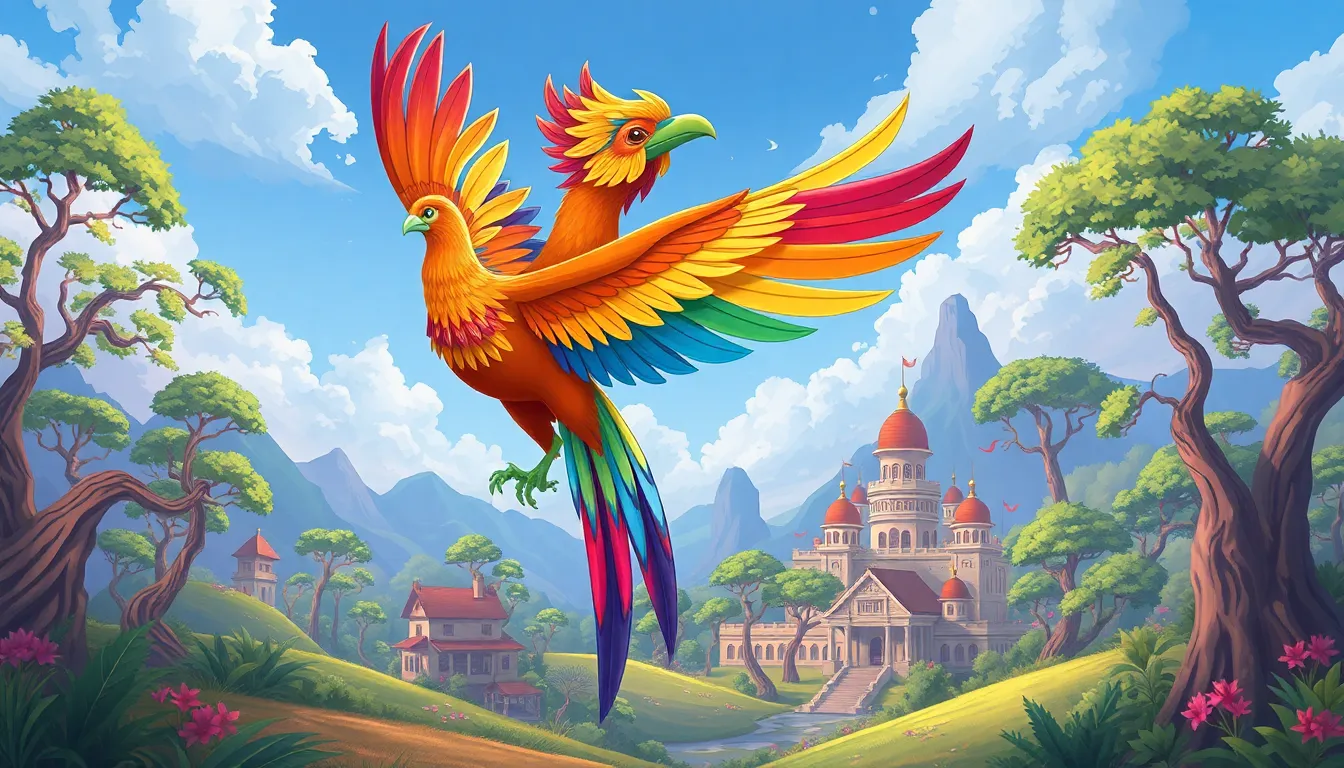
Contemporary Filipino artists and educators have transformed the Ibong Adarna legend into diverse multimedia formats that reach new generations. These modern interpretations preserve the epic’s core messages while making the mythical bird accessible through current storytelling methods.
Film and Television Productions
Filipino filmmakers have created multiple cinematic versions of the Ibong Adarna story since the 1940s. LVN Pictures produced the first major film adaptation in 1941, starring Mila del Sol and Fred Cortes, establishing the visual template for future productions. Television networks like ABS-CBN and GMA Network have developed serialized versions that expand character development across multiple episodes.
Modern productions emphasize the bird’s magical transformations through advanced special effects and animation. The 1972 film directed by Gerardo de Leon featured elaborate costume design and practical effects that brought the seven-colored plumage to life. Recent adaptations incorporate computer-generated imagery to showcase the Piedras Platas tree climbing sequence and the bird’s color-changing abilities.
Television adaptations often extend the original narrative by exploring backstories of secondary characters like the hermit who saves Prince Juan. These expanded versions introduce contemporary themes while maintaining the traditional moral framework. Fantasy series have reimagined the three princes as modern characters facing updated challenges that parallel the original search structure.
Children’s Books and Educational Materials
Publishers across the Philippines have developed age-appropriate versions of the Ibong Adarna tale for elementary and secondary students. Adarna House and OMF Literature produce illustrated editions that simplify complex language while preserving essential plot elements. These educational adaptations feature colorful artwork depicting the bird’s seven transformations and the mystical kingdom of Berbanya.
Interactive learning materials include activity workbooks that teach Filipino values through character analysis exercises. Students examine Prince Juan’s virtuous behavior compared to his brothers’ selfish actions through guided discussion prompts. Digital platforms now offer multimedia lessons combining text, audio, and visual elements to engage diverse learning styles.
Educational theater groups perform shortened versions of the epic in schools throughout Metro Manila and provincial areas. These live performances allow children to experience the story’s dramatic elements while reinforcing lessons about perseverance and family loyalty. Puppet shows and storytelling workshops bring the Ibong Adarna’s healing songs to life through participatory activities that encourage audience engagement.
Conclusion
The Ibong Adarna stands as more than just a mythical creature—it’s a powerful symbol that bridges our past with our present. Through its timeless tale of virtue conquering vice we find universal truths that speak to every generation.
We’ve witnessed how this legendary bird continues to inspire artists educators and storytellers across the Philippines. Its seven magical songs echo through modern adaptations reminding us that pure intentions and perseverance remain our most valuable assets.
The enduring legacy of Prince Juan’s journey teaches us that true strength lies not in power or status but in the purity of our hearts. As we pass this cherished story to future generations we ensure that Filipino cultural values continue to soar on the wings of the Ibong Adarna.
Frequently Asked Questions
What is the Ibong Adarna?
The Ibong Adarna is a mythical bird from Filipino literature and folklore. This magical creature possesses extraordinary abilities, including healing through song and turning listeners into stone. The bird is central to a beloved Filipino epic that tells the story of three princes on a quest to capture it. Its stunning plumage shifts through seven distinct colors as it sings, making it one of the most visually captivating creatures in Philippine mythology.
Who are the main characters in the Ibong Adarna legend?
The main characters include King Fernando of Berbanya, who falls ill and needs the bird’s healing song, and his three sons: Prince Pedro (eldest), Prince Diego (middle), and Prince Juan (youngest). Pedro and Diego fail in their quest due to arrogance and impure hearts, while Juan succeeds through humility and virtue. A hermit also plays a crucial role in helping Juan overcome his brothers’ betrayal.
What are the seven magical songs of the Ibong Adarna?
The Ibong Adarna sings seven magical songs, each with unique supernatural properties. The first six songs possess powerful healing abilities that can cure various ailments and diseases. However, the seventh song is the most dangerous—it induces eternal slumber in those with impure hearts or evil intentions. As the bird sings each song, its plumage transforms through seven brilliant colors, creating a mesmerizing spectacle.
Why did Prince Juan succeed while his brothers failed?
Prince Juan succeeded because he approached his mission with genuine humility, pure intentions, and compassion for his father. Unlike his brothers Pedro and Diego, who were driven by arrogance and selfish ambition, Juan possessed the spiritual purity necessary to resist the bird’s enchanting power. His virtuous character and unwavering determination to heal his father, rather than seek personal glory, enabled him to complete the quest successfully.
What is the cultural significance of Ibong Adarna in the Philippines?
The Ibong Adarna serves as a cornerstone of Filipino national identity and literary heritage. It’s widely used in educational settings to teach essential values like perseverance, integrity, and family loyalty. The epic reinforces Filipino cultural values about family interconnectedness and moral behavior. Contemporary artists continue to draw inspiration from it, creating modern adaptations in theater, visual arts, film, and music that keep the tradition alive.
What moral lessons does the Ibong Adarna teach?
The legend teaches several important moral lessons, including the triumph of virtue over vice, the importance of humility and pure intentions, and the consequences of greed and betrayal. It demonstrates that true success comes from character rather than status or strength. The story also emphasizes family loyalty, perseverance in the face of adversity, and the idea that good ultimately prevails over evil through spiritual purity.
How has Ibong Adarna been adapted for modern audiences?
Modern adaptations include film and television productions with advanced special effects, children’s books that simplify the story for younger readers, and interactive educational materials for schools. Theater companies regularly produce stage adaptations, while composers create symphonic works based on the bird’s songs. These multimedia formats make the ancient epic accessible to new generations while preserving its core cultural and moral messages.






